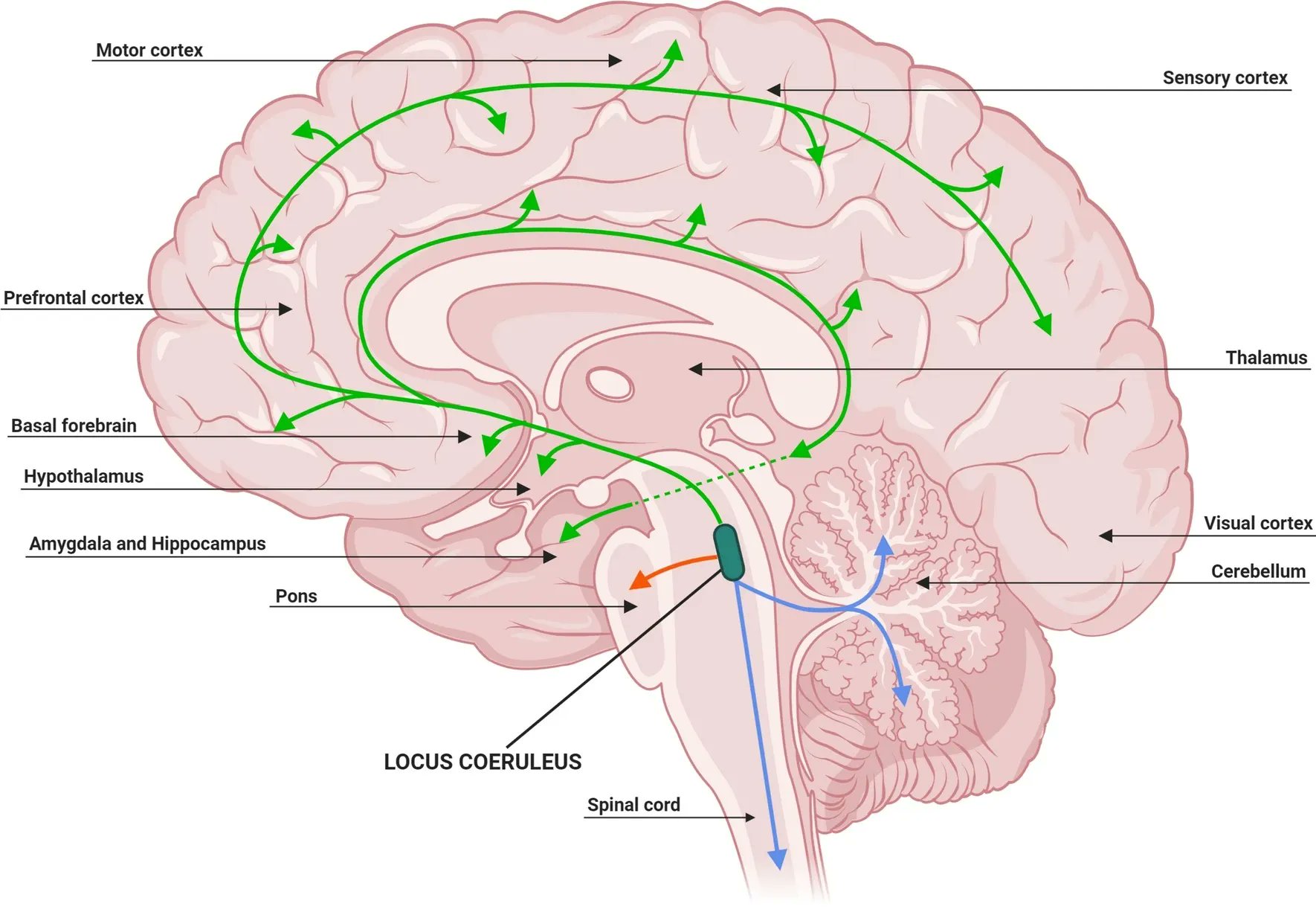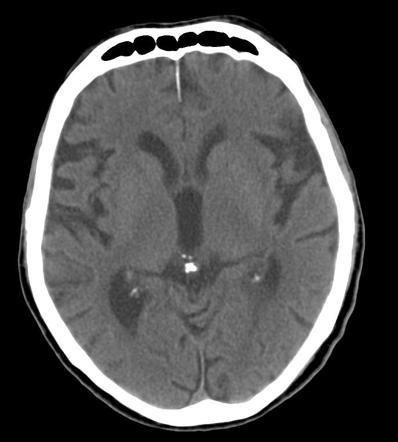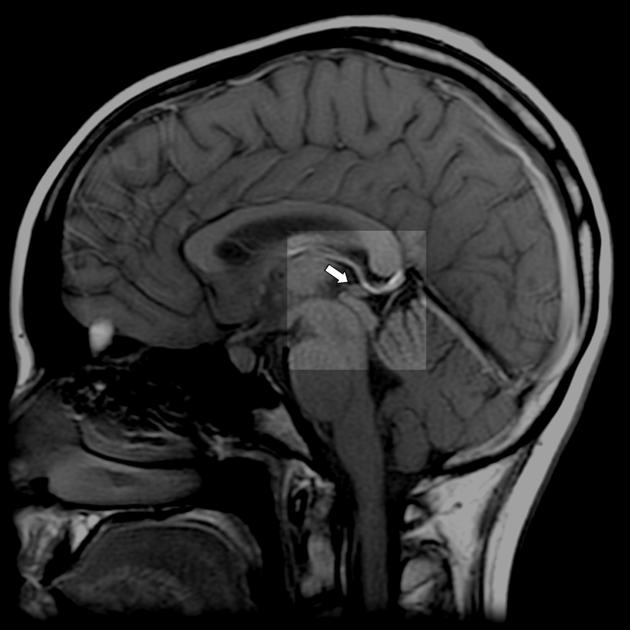You are choosing an initial antidepressant for a healthy young man who is not taking any other medications. The patient notes that in the past he has had trouble remembering to take his medications every day. Of the following antidepressants, this would be least likely to produce a withdrawal syndrome if a dose was missed:
A. Fluvoxamine.
B. Fluoxetine.
C. Paroxetine.
D. Venlafaxine.
What is B?
The majority of dopamine (DA) neurons located in the brain are in the:
A. Ventral tegmental area.
B. Substantia nigra.
C. Retrorubral area.
D. Hypothalamus.
E. Caudate.
F. Fluvius
What is B?
The ventral tegmental area, which is located immediately medial to the substantia nigra, contains DA neurons that are smaller and less densely packed than those in the substantia nigra pars compacta (Arsenault et al. 1988). A third group of DA neurons, the retrorubral area, resides in the caudal midbrain at the level of the medial lemniscus (Arsenault et al. 1988). The DA neurons in the retrorubral area are smaller and more dispersed than those located in the substantia nigra (Arsenault et al. 1988). The DA neurons located within the hypothalamus differ from those located in the nuclei in at least two ways. First, the projections of hypothalamic DA neurons are much shorter, extending only to the intermediate lobe of the pituitary and the median eminence. Second, unlike the DA neurons in the substantia nigra, ventral tegmental area, and retrorubral area, most of the DA neurons in the hypothalamus do not express the DA transporter protein (Ciliax et al. 1995, 1999). The striatum, including the caudate, putamen, and nucleus accumbens, is a major projection target of the DA neurons in the substantia nigra.
F is made up.

Of the following statements concerning electroconvulsive therapy (ECT), this is true:
A. ECT is more efficacious than antidepressant pharmacotherapy.
B. A higher dose (more treatment) of ECT is associated with a positive response.
C. The response rate to ECT of treatment-resistant unipolar depressed patients is 80%.
D. ECT exerts its antidepressant effects more rapidly than pharmacotherapy.
E. All of the above.
What is E?
In regard to pharmacological profile, memantine is:
A. An acetylcholinesterase inhibitor (AChEI) and butyrylcholinesterase inhibitor (BChEI).
B. A reversible competitive AChEI.
C. A noncompetitive N-methyl-D-aspartate (NMDA) receptor antagonist.
D. A specific, competitive, and reversible AChEI.
E. A slowly reversible AChEI and BChEI.
F. Straight to cocaine receptors.
What is C?
This Italian dessert:

What are cannoli?
This benzodiazepine does not undergo phase I oxidative metabolism and therefore may be safer to use in patients with liver disease:
A. Lorazepam.
B. Diazepam.
C. Clonazepam.
D. Alprazolam.
E. Hepatopam
What is A?
The principal noradrenergic cell group, which has the largest group of norepinephrine (NE)–containing neurons in the mammalian brain, is the:
A. Thalamus.
B. Cerebellar cortex.
C. Hypothalamus.
D. Amygdala.
E. Locus coeruleus.
What is E?

These are your ADLs...
List some.
What are "activities of daily living"? These are basic functions of self care. They include bathing, dressing, toileting, transferring, continence, and feeding.
Stimulant psychosis is frequently seen in patients who abuse amphetamines. Common symptoms of amphetamine psychosis include all of the following except:
A. Paranoia.
B. Thought disorder.
C. Pacing.
D. Visual hallucinations.
E. Stereotypy.
F. Trips to White Castle and working on your car engine at 2 AM.
What is B?
"Stimulant psychosis—often referred to as paranoid psychosis—is common in amphetamine abuse scenarios because of the overwhelming presentation of the eponymous symptom. Visual hallucinations are also disproportionately common with amphetamine psychosis; in contrast, disorientation and thought disorder, which are more common in schizophrenia, are rarely seen (Angrist et al. 1974). Psychosis is often seen together with stereotypy. In humans, stereotypy can take many forms but usually is expressed as pacing, searching, or examining minute details."
The name of the cookies used in this Italian dessert:
1 point for naming the dessert, 2 for the common name of the cookies, 3 for the proper name.

What is tiramisu, Lady Fingers, aka Savoiardi?

The atypical antipsychotic associated with developing TD?
What is risperidone?
The highest concentration of serotonin (5-HT)–containing neurons in the mammalian brain is found in the:
A. Frontal cortex.
B. Occipital cortex.
C. Raphe nuclei of the brain stem.
D. Prefrontal cortex.
E. Parietal cortex
F. Blaue reiter
What is C?
F is not in the brain
A common antidepressant-related side effect, and its prevalence is estimated to be upwards of 20% of patients, probably 10-15%...In this case, a 37M was started on venlafaxine and came for a follow up:
He said he felt embarrassed in public and was interested in treatment for the side effect. He was started on benztropine 0.5mg to be taken as needed. The patient reported using benztropine only on warm and hot days and experienced significant relief...
What is antidepressant related sweating?
Possibly from dysregulation of cholinergic sweat glands or the hypothalamic thermoregulation center.
From UtD:
"Antidepressants are the most common medication-related cause of sweating, occurring in approximately 10 to 15 percent of patients taking these medications. Antidepressants cause a generalized increase in sweating, with some patients more aware of episodes at night, therefore presenting with complaints of night sweats. Sweating usually occurs within several weeks of initiation of these medications. In our practice, we have observed rates of sweating greater than described in the US Food and Drug Administration (FDA) drug package inserts. All classes of antidepressants have been implicated, including tricyclics and selective serotonin reuptake inhibitors (SSRIs). However, tricyclics, bupropion, and venlafaxine cause sweating more frequently than SSRIs. Sweating is the most common side effect of desipramine and duloxetine.
The atypical antipsychotic medication clozapine has also been associated with generalized hyperhidrosis."
https://link.springer.com/article/10.2165/00002018-200831020-00002
The U.S. Food and Drug Administration (FDA) has approved fluoxetine for the treatment of all of the following disorders except
A. Bipolar disorder with olanzapine
B. Major depressive disorder.
C. Obsessive-compulsive disorder.
D. Bulimia nervosa.
E. Premenstrual dysphoric disorder.
F. None of the above.
What is F?
Approved for all of those.
Italian dessert made with gelatin, sweetened cream, and chilled in a mold.

What is panna cotta?
The two SSRIs with the worst DC symptoms and the SNRI also associated with it.
What are fluvoxamine and paroxetine?
Venlafaxine was initially shorter acting and had notable DC issues. It now comes in an extended release capsule.

The most common presentation of this consists of gait and balance impairment, a wide-eyed staring facial expression, abnormal speech, memory and cognitive impairment and a key sx I will leave out... Cognitive symptoms include forgetfulness and personality changes, such as loss of interest in formerly pleasurable activities (apathy), impaired attention and concentration, depression, and increased irritability.
Fewer than half of patients are initially diagnosed correctly because many patients do not present with the classic syndrome. Many of these patients are initially slow and have muscle rigidity and occasionally tremor, resembling Parkinson disease, and they may initially respond somewhat to levodopa. Other patients present with bizarre stiffening (rigidity and dystonia) and loss of voluntary function in one upper limb, as is seen in corticobasal degeneration.
Some patients exhibit a syndrome of progressive gait freezing. These patients exhibit hesitant initiation of gait and a tendency to freeze or stop when turning and when crossing thresholds (doorways). They lack cognitive issues and the key symptom. Small handwriting and low-volume rapid, mumbling speech (tachyphemia or cluttered speech) are typical...
What is Progressive Supranuclear Palsy?
The key symptom:
"a slowing or loss of voluntary eye movement, particularly in the downward direction (supranuclear ophthalmoplegia)."
Classic is Richardson syndrome.
" A sagittal T1-weighted image shows atrophy of the midbrain, with preservation of the volume of the pons. This appearance has been called the "penguin sign". There is also atrophy of the tectum, particularly the superior colliculi."
These are your IADLs...
List some.
What are "Instrumental activities of daily living"?
"Things you do every day to take care of yourself and your home. They are one way to measure how well you can live on your own. While activities of daily living (ADLs) are basic self-care tasks like bathing, IADLs require more complex planning and thinking."
- Use the phone. This includes answering and calling others.
- Shop for groceries on your own.
- Plan, heat, and serve your own meals.
- Manage your medicines. This includes refilling them when needed and taking them correctly.
- Clean your house or apartment.
- Get around on your own, either by car, taxi, or public transportation.
- Manage money and pay bills.
The least anticholinergic among the tricyclic and tetracyclic compounds:
A. Amitriptyline.
B. Clomipramine.
C. Desipramine.
D. Doxepin.
E. Funazine
What is C?
Nortriptyline is a close #2 and has the least OH and weight gain, and less sedation on average. It is also less affected by changes in metabolism.
Funazine is something I thought I made up but is a brand name of fluphenazine.

A Sicilian dessert, made by pouring a puree into a pan, freezing, and scraping it at intervals.

What is a granita?
Similar to a sorbet, which is churned and smooth.
This has not been reported as a risk associated with maternal use of selective serotonin reuptake inhibitors (SSRIs) during pregnancy:
A. Increased rate of stillbirth.
B. Increased rate of pre-eclampsia.
C. Increased rates of persistent pulmonary hypertension in the newborn.
D. Increased rate of prematurity.
What is A?
"Increased risks for premature birth, small-for-gestational-age birth, pre-eclampsia, and persistent pulmonary hypertension in the newborn have been reported in association with SSRI exposure during pregnancy; however, study results are conflicting, and the risk of one or more of these conditions occurring in association with SSRI exposure may be no worse than the risk of untreated de-pression in pregnancy..."


What is the pineal gland?
What this is called:
/puka-dog-4774786-hero-01-190ed36488114e7bb2bab9ec3684c454.jpg)

What is a ?
A common side effect of modafinil reported in clinical trials is:
A. Headache.
B. Seizures.
C. Rash.
D. Hypotension.
E. Bradycardia
What is A?
And nausea.
Name each of these two Italian desserts:
A.

B.
What are -
A - sfogliatelle
B - rum baba
???